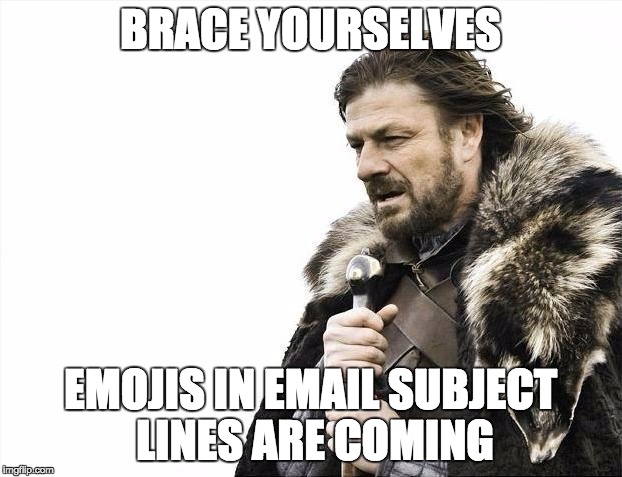Personalization is Powerful, But Don’t Get Too Personal
Let me start by saying that this topic is top of mind because we crossed a line and got a little too personal with one of our past marketing emails. More on that later, but since then I’ve been doing some research on the benefits and do’s and don’ts of email personalization, and have formulated some guidelines that you might find useful.
A Little History Lesson
The overall concept of content personalization on the web has been growing rapidly in the last decade. Such enterprise CMS platforms as Sitecore and Adobe Experience Manager are leading the charge to help big brands serve up dynamic bits of content that make each website visitor feel at home and help them walk through the most relevant digital doors.
Technically speaking, however, personalization technology has been around for decades and has gained the most traction in the direct marketing world via print and email. Merging data from CRMs and Marketing Automation platforms into individual email templates is table stakes today, and all-but-required for email marketers who are trying desperately to get their emails opened.
But here’s the question: How personal is too personal?
You are probably well aware that merging a recipient’s name into an email subject line is beneficial and considered a best practice these days. But outside of that, is there a line that businesses shouldn’t cross with subject lines or email copy that are seemingly tongue-in-cheek or playful, like something personal you would send to a friend?
The answer is yes. There is definitely a line, but the line is fuzzy when you consider things like audience demographics, psychographics, brand personality and voice. B2C marketers obviously have more slack in this rope vs. the tightrope that many B2B and enterprise marketers have to walk.
In a recent white paper, titled “Commercialization of the Enterprise“, Logic Design Solutions opened by saying:
“The digital experiences people have in their consumer lives are shaping the expectations they have at work, creating a strong push towards the commercialization of enterprise technology. Elegant, seamless, personalized digital experiences are the expected norm regardless of a user’s context. It’s a fact being embraced by CIOs and demanded of corporate IT shops.”
Just as people expect a better, personalized experience when using business technology, I strongly believe that breathing more life into our content and direct communications is important. But there’s a line that you can cross (speaking from experience), so here are some guardrails to help ensure you don’t crash and burn with your email audience.
1. Who is the Recipient?
How well do you know the people who will receive your email? A personal friend totally gets your toilet humor, but this is not the time or place for that. Are you communicating with customers who you’ve personally worked with? You would probably have a little more slack to joke or use more colorful language. If you’re going in cold, you should definitely mind your P’s and Q’s, but that doesn’t mean you should eliminate personality or personalized messaging.
The best email marketers today focus just as much on list segmentation as they do email content. And when you have lots of data on your audience segments, personalization opportunities abound, content relevance hits its mark and CTRs soar.
2. Brand Personality, Tone & Voice
Any brand strategy exercise worth its salt should address and define these concepts. For DivvyHQ, our personality is stated simply: We are content nerds. Smart. Fun. A little irreverent. And on a mission to keep things simple. This personality should be injected into most, if not all, email subject lines and copy. When executed consistently across all of our content and customer touch points, this practice helps to set expectations for our customer experience and plays a role in qualifying the type of customers we want to work with.
I’d even go out on a limb and say that if you don’t get our jokes, you’re probably not a good fit for us.
3. What’s the Goal of Your Email?
Captain Obvious here, but I’ve seen way too many aimless emails in my day to just skip this. You should be able to clearly articulate every email’s purpose. And that purpose should revolve around delivering something specifically valuable to a specific, targeted recipient who should, in theory, care about what you’re delivering. Anything outside of that is spam in my book.
4. Subject Line Do’s & Don’ts
Do’s
I read an interesting study by a group of researchers at Carnegie Mellon that found there are two primary characteristics that drive email opens: utility and curiosity.
- Utility as a motivator would be a straightforward, timely and useful message that clearly tells the recipient what’s in it for them.
- Curiosity, on the other hand, peaks interest and triggers an innate desire to fill a perceived information gap in our brains. We’ve all seen how Buzzfeed executes their headlines… “You’ll never believe what happened next…”
From an email personalization perspective, using the recipient’s name in the subject line can trigger that twinge of curiosity. Beyond that, you should strive to either leverage your segmentation data to hone in on a specific, high-value utility, continue down the curiosity path with a relevant question, or a combo of both.
Don’ts (or at least be careful)
- Remember that sarcasm or humor may not be taken as intended. Emoji usage in other digital communications have helped a bit with this, but emojis in email subject lines aren’t mainstream yet.
- Be careful with presumptive messaging. You probably shouldn’t use any sort of presumptive language unless you have hard data to back up your presumption. I just scanned my spam folder and found this: “Your Brand is in Trouble.” Some marketer thought it would be a good idea to presume some sort of alarming state in an effort to get my attention and sell me something to get us out of presumable hot water. We’re doing just fine, spammer.
- Be careful with negativity. Taking a negative angle with subject lines and content can be a good thing, because it provides a different take on the typical sunshine-and-roses approach that makes up most corporate communications. But hateful or inflammatory subjects could cross the line.
5. When in doubt, test.
Come up with some alternatives that fulfill the criteria above. Take a sample of your list and send a few variations to see which gets the most engagement. When you have a winner, hit send on the full list.
Back to Our Story
I’m not going to divulge the exact details of the email that got us in a little hot water (sorry!), but I will say that some folks did not pick up on the sarcasm we had intended. And looking back on the words we used, we can see how the email’s subject line could be arresting to those stressed marketers who were “not in the mood” for sarcasm. Lesson learned.


